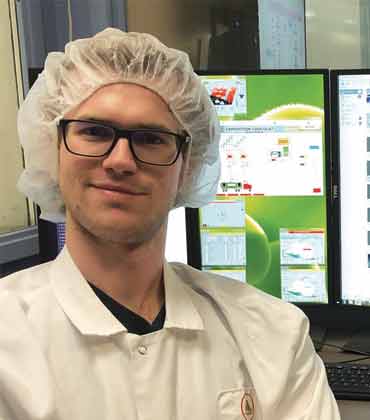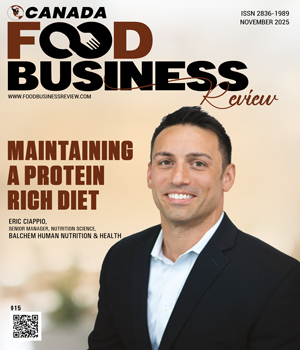What looks like a simple chocolate chip in a cookie or a swirl in ice cream is, for food manufacturers, one of the most decisive factors in product success. Inclusions must survive the extremes of baking and freezing, run with less fat to meet consumer demand and deliver identical results batch after batch. But most chocolate manufacturers who supply these chocolate inclusions still rely on equipment that was never designed for this purpose. For instance, Bühler’s machines, the global gold standard, are optimized for traditional chocolate products, like bars, pralines, and molded pieces, where higher fat content is the norm.
When those same systems are pushed into producing low-fat inclusions, the chocolate no longer holds its form.
Nutriart changes the equation. By taking Bühler’s proven equipment as a foundation and re-engineering it with proprietary modifications, from moisture-reducing roasters to refiners with live quality sensors, it has created a process purpose-built for inclusions. The result is chocolate that runs leaner on fat without sacrificing efficiency, delivering the kind of industrial consistency that food manufacturers can count on, run after run.
We make an immediate difference when manufacturers come to us after struggling with chocolate that burns, melts away or leaks during baking. Our inclusions perform exactly as they should, so fewer batches are rejected in quality control, and consumers experience the same dependable quality in every bite.
“We make an immediate difference when food manufacturers come to us after struggling with chocolate that burns, melts away or leaks during baking. Our inclusions perform exactly as they should, so fewer batches are rejected in quality control, and consumers experience the same dependable quality in every bite,” says Jean Phillipe Leclerc, General Manager.
Sustaining that advantage demands automation at the core. Chocolate quality ultimately depends on three critical variables; fat content, particle size and viscosity, which Nutriart calls the triangle of quality. While most plants measure these factors intermittently, Nutriart automates the process from start to finish. Infrared spectrometers keep fat precisely on target, laser sensors embedded in refiners monitor particle size continuously and a patent-pending system adjusts viscosity live during conching. The integrated control loop guarantees that every batch meets specifications exactly, delivering the operational consistency manufacturers rely on while protecting both cost efficiency and product performance.
Such reliability stems from Nutriart’s identity as an engineering-driven company. Unlike most chocolate makers, it operates as an engineering-driven enterprise, keeping 85 percent of its engineering in-house. A team of 20 specialists oversees everything from mechanical design to automation. Each system is conceived, tested and refined internally, ensuring technology is tailored to the realities of chocolate production rather than generic solutions.
Engineers spend time on factory floors, observing how equipment behaves in real runs and immediately translating those insights into improvements. The loop between design and production creates a culture of continuous innovation that few manufacturers can match.
Today, Nutriart has also become a trusted partner for brands looking to bring products to market with the same consistency that defines its inclusions. Its fastest-growing segment, “chips in a bag” for retail baking, has already become a staple on grocery shelves, proving its ability to scale high-volume products that consumers rely on every day. At the same time, it supports premium categories with snacksize portions, 100-gram bars and filled chocolates, offering retailers the assurance that even high-value products will meet the tightest specifications.
By uniting process innovation, technical mastery and close customer collaboration, Nutriart has evolved into a strategic partner that helps food manufacturers deliver reliable, indulgent chocolate experiences at scale. With Nutriart by their side, producers can now meet the dual pressures of efficiency and rising consumer expectations with confidence rather than compromise.
Thank you for Subscribing to Food Business Review Weekly Brief




